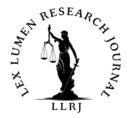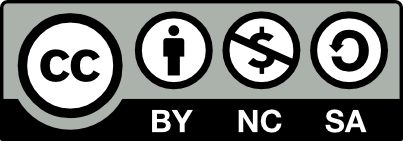Written by DIVYA S. SOHONI, Lawyer,
LLM In IPR and Technological Laws,
University of Mumbai
September 2025
Introduction
In the age of digital expression, memes have become the lingua franca of the internet. They’re not just jokes they’re commentary, critique, branding, and even activism. From viral formats like “Binod” and “Rasode Mein Kaun Tha” to global classics like “Distracted Boyfriend” and “Woman Yelling at a Cat,” memes shape how we communicate, protest, and entertain. But as memes go viral, a legal question looms: who owns a meme? Can a humorous remix of copyrighted content be protected or penalized under Indian law?
*[Disclaimer: The memes, terms, and cultural references such as “Binod” and “Rasode Mein Kaun Tha” mentioned in this blog are used purely for illustrative and academic purposes. They are not intended to defame, offend, or commercially exploit any individual, community, or copyrighted work.]
This blog explores the intersection of meme culture and copyright law in India, revealing a legal landscape that’s still catching up with the internet’s sense of humor.
What Is a Meme, and Why Does It Matter Legally?
A meme is typically a visual or textual remix of existing content an image, video, or phrase repurposed for humor, commentary, or satire. Legally, this raises questions about:
- Originality: Is the meme a new work or a derivative one?
- Authorship: Who created the meme the original image owner or the person who added the joke?
- Purpose: Is the meme commercial, satirical, or political?
These questions are central to determining whether a meme qualifies for copyright protection or falls under infringement.
Copyright Law and Memes in India
India’s Copyright Act, 1957 protects original literary, artistic, musical, and dramatic works. Memes often remix copyrighted material film stills, celebrity photos, brand logos without permission. This creates tension between creative freedom and legal ownership.
Key Provisions:
- Section 13: Grants protection to original works. Memes may qualify if they show sufficient creativity and originality.[1]
- Section 14: Gives exclusive rights to reproduce, distribute, and adapt works. Meme creators may infringe these rights if they use copyrighted content without authorization.[2]
- Section 52: Lists exceptions under “fair dealing” including criticism, review, and reporting. However, satire and parody are not explicitly mentioned, creating ambiguity.[3]
This lack of clarity leaves meme creators vulnerable to takedown notices, infringement claims, and even defamation threats.
Is Meme Creation Infringement or Fair Use?
Indian law uses the concept of “fair dealing,” which is narrower than the U.S. doctrine of “fair use.” This makes parody protection uncertain. Courts have not yet ruled definitively on meme-related infringement, but the following factors are likely to be considered:
- Purpose and character of use: Is the meme transformative, adding new meaning or message, or merely a copy?
- Amount and substantiality: Does the meme use the entire work or just a snippet?
- Effect on the market: Does the meme harm the original creator’s commercial value or substitute the original?
In the absence of clear judicial precedent, meme creators operate in a legal grey zone.
Memes in Political Speech: A Constitutional Dilemma
Memes are often used to critique politicians, mock policies, or satirize public figures. This raises a constitutional tension: does copyright enforcement against political memes violate free speech under Article 19(1)(a)? Indian courts have upheld satire and parody as protected forms of expression, especially in political contexts. However, without explicit statutory protection, meme creators remain vulnerable to censorship and legal intimidation.
The Supreme Court’s decision in Shreya Singhal v. Union of India (2015), which struck down Section 66A of the IT Act, affirmed the importance of protecting online speech.[4] While not directly about memes, it sets a precedent for defending digital satire from overbroad regulation.
Platform Liability and Meme Moderation
Social media platforms play a key role in meme circulation. But are they liable for hosting infringing memes? Under Section 79 of the IT Act, intermediaries are protected if they act as neutral conduits and comply with takedown procedures.[5] However, the 2021 IT Rules impose stricter content moderation duties, including traceability and grievance redressal.[6] This could pressure platforms to over-censor memes, especially those involving political or celebrity content.
A balanced approach would involve:
- Clear guidelines distinguishing parody from infringement
- Transparency in takedown decisions
- Appeals mechanisms for creators whose content is removed unfairly
Commercial Use and Brand Memes
When brands use memes for marketing, the stakes change. Commercial use of copyrighted material even in meme form can trigger infringement claims. For example, using a viral meme template to promote a product without permission from the original creator or photographer may violate copyright and moral rights.
Some companies now license meme formats or collaborate with meme creators. Others risk litigation, especially when memes are used in paid campaigns or influencer promotions.
Moral Rights and Meme Creators
Under Section 57 of the Copyright Act, authors have moral rights to claim authorship and object to distortion or mutilation of their work.[7] If a meme misrepresents or ridicules the original work, the creator may have grounds to sue even if the meme is non-commercial. This is especially relevant when memes are used to spread misinformation or defame individuals.
Global Perspectives: What India Can Learn
- United States: Courts often protect memes under fair use, especially if they’re transformative and non-commercial. The landmark case Campbell v. Acuff-Rose Music affirmed parody as fair use.[8]
- European Union: The EU Copyright Directive (2019) recognizes parody as an exception, but enforcement varies across member states.[9]
- Australia: Fair dealing includes satire and humor, offering broader protection than India.[10]
- China: Increasing regulation of online content, including memes, under cyber laws and censorship frameworks.[11]
These models suggest that legal clarity around parody and transformative use is essential for balancing rights and creativity.
Proposed Legal Pathways for India
To address the growing influence of meme culture, Indian law must evolve:
- Amend Section 52 to explicitly include parody and satire as fair dealing exceptions
- Define “transformative use” in Indian jurisprudence to guide meme-related cases
- Create guidelines for meme use in advertising, influencer content, and political campaigns
- Encourage Creative Commons licensing for meme templates and viral formats
- Educate digital creators on copyright basics and ethical remixing
Conclusion
Memes may be funny, but the legal questions they raise are serious. As India’s digital culture evolves, copyright law must adapt not to kill the joke, but to protect the creator. In the age of viral humor, even laughter deserves legal clarity. Whether you’re a meme maker, a brand strategist, or a legal scholar, the future of copyright will be shaped by how we treat the internet’s most contagious form of creativity.
References
- The Copyright Act, 1957 (India)
Citation: The Copyright Act, No. 14 of 1957, § 13, § 14, § 52, § 57, Acts of Parliament, 1957 (India).
Link: https://copyright.gov.in/Documents/CopyrightRules1957.pdf
- Information Technology Act, 2000 (India)
Citation: Information Technology Act, No. 21 of 2000, § 79, Acts of Parliament, 2000 (India).
Link: https://www.meity.gov.in/content/information-technology-act-2000
- Information Technology (Intermediary Guidelines and Digital Media Ethics Code) Rules, 2021
Citation: Information Technology (Intermediary Guidelines and Digital Media Ethics Code) Rules, 2021, Gazette of India, Feb. 25, 2021.
Link: https://www.meity.gov.in/content/intermediary-guidelines-and-digital-media-ethics-code-rules-2021
- Shreya Singhal v. Union of India
Citation: Shreya Singhal v. Union of India, (2015) 5 S.C.C. 1 (India).
Link: https://indiankanoon.org/doc/110813550/
- Campbell v. Acuff-Rose Music, Inc.
Citation: Campbell v. Acuff-Rose Music, Inc., 510 U.S. 569 (1994).
Link: https://supreme.justia.com/cases/federal/us/510/569/
- EU Copyright Directive (2019)
Citation: Directive 2019/790 of the European Parliament and of the Council of 17 April 2019 on Copyright and Related Rights in the Digital Single Market, 2019 O.J. (L 130) 92.
Link: https://eur-lex.europa.eu/legal-content/EN/TXT/?uri=CELEX:32019L0790
- Australia Copyright Act 1968
Citation: Copyright Act 1968 (Cth) § 41A (Austl.).
Link: https://www.legislation.gov.au/Series/C2004A07357
- China’s Deep Synthesis Regulations (2023)
Citation: Cyberspace Administration of China, Provisions on the Administration of Deep Synthesis Internet Information Services (2023).
Link: https://www.cac.gov.cn/2023-01/10/c_1672743724456684.htm
[1] The Copyright Act, No. 14 of 1957, § 13, Acts of Parliament, 1957 (India).
[2] Id. § 14.
[3] Id. § 52.
[4] Shreya Singhal v. Union of India, (2015) 5 S.C.C. 1 (India).
[5] Information Technology Act, No. 21 of 2000, § 79, Acts of Parliament, 2000 (India).
[6] Information Technology (Intermediary Guidelines and Digital Media Ethics Code) Rules, 2021, Gazette of India, Feb. 25, 2021.
[7] The Copyright Act, No. 14 of 1957, § 57, Acts of Parliament, 1957 (India).
[8] Campbell v. Acuff-Rose Music, Inc., 510 U.S. 569 (1994).
[9] Directive 2019/790 of the European Parliament and of the Council of 17 April 2019 on Copyright and Related Rights in the Digital Single Market, 2019 O.J. (L 130) 92.
[10] Copyright Act 1968 (Cth) § 41A (Austl.).
[11] Cyberspace Administration of China, Provisions on the Administration of Deep Synthesis Internet Information Services (2023).


